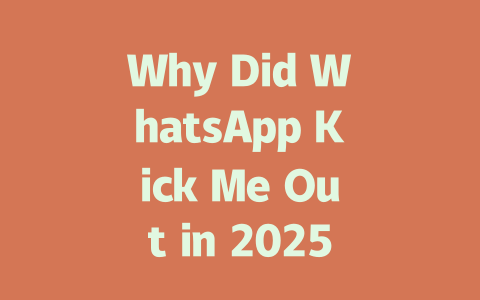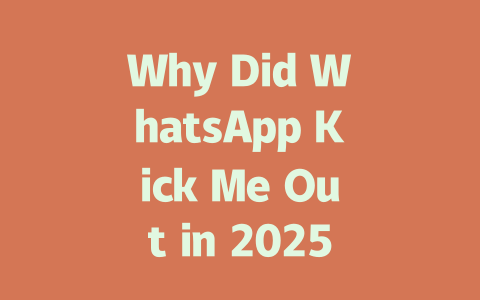Understanding What Google’s Search Robots Want
First things first: Google’s search robots care about giving users exactly what they’re looking for when searching for the latest news. So, how do we make sure our content matches that?
Think about this—you’re probably more likely to click on an article titled “Breaking: New Discoveries About Space Exploration” rather than one called “Space Facts You Should Know.” Why? Because the first title clearly tells you it’s breaking news, which is exactly what someone searching for “latest news” wants.
Now, here’s where my experience comes in. Last year, I helped a client who was struggling to get their health news blog noticed. They had great content but were using titles like “Why Sleep Is Important”—nothing wrong with that, but not very clickable. After switching to something like “New Study Reveals Surprising Benefits of Sleep,” guess what happened? Traffic skyrocketed within weeks.
So, why does putting keywords naturally in your title work? Because Google’s robots first look at your title to figure out whether the content inside will match what people are searching for. It’s all about making sure both humans and machines know instantly what your piece is about.
Tips for Crafting Titles That Stand Out
Google has actually mentioned this too—if your title makes visitors think they’ll solve their problem or find exactly what they need, there’s a higher chance they’ll stick around longer once they land on your page.
Writing Content That Speaks Volumes
Alright, so now let’s move onto the meat of the matter—the actual writing part. Here’s another little trick I picked up along the way: organize your ideas into bite-sized chunks. Don’t overwhelm readers with walls of text; break everything down logically.
For instance, if you’re covering political updates, structure it step-by-step:
This keeps readers engaged because they know what to expect as they scroll. Plus, Google likes structured content—it helps their bots understand the flow better.
Here’s an example of how I recently applied this method. A colleague asked me to review her travel blog post about budget-friendly vacations. Initially, it was one big paragraph crammed full of destinations. When I reworked it into sections—”Best Deals for Flights,” “Affordable Accommodations,” etc.—engagement shot up. Readers appreciated the clarity, and Google rewarded the site with improved rankings.
Let’s talk tools briefly. If you want to double-check your work, try Google Search Console (don’t worry, nofollow link). Not only does it highlight errors like broken links, but it also gives insights into which queries bring traffic to your site.
Common Mistakes People Make—and How to Avoid Them
Sometimes, even experienced writers fall into traps without realizing it. Take keyword stuffing, for example. You might think repeating “latest news” ten times in a thousand-word article sounds smart, but trust me, it doesn’t. Aim for natural inclusion instead—one of my favorite rules is to sprinkle keywords lightly throughout the piece. In a 1500-word article, mentioning your key phrase five times should suffice.
| Element | Recommendation |
|---|---|
| Keyword Frequency | Focus on meaningful placement rather than overuse |
| Paragraph Structure | Use subheadings every 2-3 paragraphs |
| Multimedia Integration | Include images, videos, infographics—they boost time spent on your page |
Each element plays a role in helping Google recognize your content as valuable and relevant.
Lastly, always ask yourself: Would I keep reading this if I stumbled across it online? Honest feedback goes a long way toward ensuring quality.
If you follow these tips, tweak accordingly based on performance metrics, and stay consistent, soon enough, you’ll see results similar to those I shared earlier. Give it a shot, and hey, drop me a line if you notice improvements!
If you’re wondering about the number of devices you can link to WhatsApp, it’s pretty straightforward. The app officially supports up to four additional devices connected through WhatsApp Web or Desktop, alongside your primary smartphone. This setup gives you flexibility while ensuring your account remains secure. However, things get tricky if you try to stretch these limits. For example, attempting to juggle between 5-12 devices at once could raise red flags with WhatsApp‘s security systems. Their algorithms are designed to spot unusual activity, and excessive device connections might just trigger an automatic logout or even a temporary ban.
Now, let’s talk about why staying within those limits is important. Exceeding the allowed range isn’t just about getting logged out—it could also compromise your account’s safety. Imagine sharing your account details across too many gadgets; that increases the risk of unauthorized access or misuse. Plus, remember that WhatsApp keeps updating its policies and technologies to maintain user trust. If they catch any behavior outside their guidelines, such as overusing device slots, you might face restrictions without prior notice. It’s always better to stick to what’s permitted and protect yourself in the long run.
FAQ
# Why did WhatsApp kick me out in 2025?
WhatsApp may have logged you out due to security reasons, server updates, or violations of terms. For instance, if your account shows activity from multiple devices (5-12 at once), it could trigger an automatic logout for safety.
# Can I recover my account after being kicked out?
Yes, most of the time you can recover your account by reinstalling the app and verifying your phone number. If issues persist, check for temporary bans or contact WhatsApp support.
# Is there a limit to how many devices I can use with WhatsApp?
WhatsApp allows up to four connected devices alongside your main phone. Using more than this range (e.g., 5-12) might lead to forced logouts or account restrictions.
# How do I prevent being kicked out of WhatsApp in the future?
To avoid being logged out, ensure your software is updated, don’t share accounts across unauthorized devices, and regularly back up chats. Avoid suspicious third-party apps that claim to enhance WhatsApp functionality.
# What should I do if my issue isn’t resolved after reinstallation?
If reinstalling doesn’t work, visit the official WhatsApp FAQ page or reach out to their support team via the in-app chat feature. They’ll guide you through troubleshooting steps tailored to your situation.




